KVASER CAN-BUS-FD-INTERFACES
KVASER is one of the market leaders when it comes to connecting CAN-bus networks to various interfaces. CAN-bus interfaces to USB, WLAN/WiFi, PCI, PCIe, Mini-PCI-Express, PC-104 and Ethernet are offered. Interfaces as DIN rail modules (DIN rail versions) for the CAN-bus are also available. The new CAN-USB-converters and CAN-PCIE-cards are compatible to the new CAN-FD standard.
A new feature of EtherCAN is the possibility to connect the CAN bus with the Ethernet LAN or the CAN bus via RF signals using the CAN AirBridge; this allows to bridge larger distances that would be difficult to achieve with cables, e.g. in cranes, trucks, pipelines, building services engineering etc. In this way, two CAN networks can also be connected with each other. The CAN-Air Bridge from Kvaser is available both in the 1-to-1 configuration and as a one-to-any configuration; the latter is an ideal way of connecting several (one-to-any) CAN networks or CAN nodes wirelessly and dynamically to a generally stationary CAN node, e.g. a higher-level system controller. A typical example would be driverless transport systems (AGVs) in a factory hall or logistics center that drive past a control station, connect to it and exchange data, then log out again and continue driving autonomously:
CAN via Ethernet LAN: Kvaser Ethercan Light HS (73-30130-00713-0)
CAN-Wifi (WLAN): Kvaser BlackBird v2 (73-30130-00671-3)
one to one wireless CAN bridge: Kvaser Air Bridge Light HS (CE) (73-30130-00808-3)
one to any wireless CAN bridge: Kvaser Air Bridge M12 (73-30130-01494-7)
KVASER focuses on easy handling, high reliability and above all fast delivery (usually from stock). Another important criterion, e.g. for applications in medical technology, is availability over a long period of time; should a product have to be discontinued, KVASER guarantees the availability of a compatible product for the future!
The different CAN interfaces, LIN interfaces and CAN data loggers are offered with different connectors like ODBII and in different performance classes. The new CAN interfaces are of course CAN-FD-compatible.
Many KVASER CAN bus interfaces are also available as pure PCBs, so that OEM-customers can integrate the CAN-bus interface directly into their application - so connectors can be omitted and costs are reduced. Alternatively brand label CAN-bus solutions can be offered for OEM customers also.
The new CAN-FD DIN rail modules SE410S-X10 are a powerful interface from Ethernet to CAN-FD (4 channels), which can be supplemented by various I/O (digital inputs/outputs, analog inputs/outputs, relay modules).
Of course there are also corresponding free software tools for commissioning and diagnostics for the CAN-bus interfaces. KVASER also supplies the drivers for Windows and for most of the CAN-bus interfaces also for Linux free of charge. The KVASER website also offers very helpful training material for CAN bus.
In the data sheets on the right side a small selection of our CAN-bus interfaces is shown. Your searched product is not listed - no problem, just ask us!

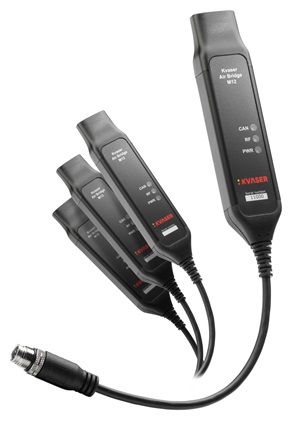
KVASER CAN-BUS- (FD)-INTERFACES, CAN-USB-CONVERTER
KVASER is one of the market leaders when it comes to connecting CAN-bus networks to various interfaces, e.g. as a CAN-Service-Tool. CAN-bus interfaces to USB, WLAN, PCI, PCIe, Mini-PCI-Express, PC-104 and Ethernet are offered. Interfaces as DIN rail modules (DIN rail versions) for the CAN-bus are also available.
A new feature of EtherCAN is the possibility to connect the CAN bus with the Ethernet LAN or the CAN bus via RF signals using the CAN AirBridge; this allows to bridge larger distances that would be difficult to achieve with cables, e.g. in cranes, trucks, pipelines, building services engineering etc. In this way, two CAN networks can also be connected with each other.
KVASER focuses on easy handling, high reliability and above all fast delivery (usually from stock). Another important criterion, e.g. for applications in medical technology, is availability over a long period of time; should a product have to be discontinued, KVASER guarantees the availability of a compatible product for the future!
The different CAN interfaces, LIN interfaces and CAN data loggers are offered with different connectors like ODBII and in different performance classes. The new CAN interfaces are of course CAN-FD-compatible.
Many KVASER CAN bus interfaces are also available as pure PCBs, so that you can integrate the CAN-bus interface directly into your application - so connectors can be omitted and costs are reduced. Alternatively brand label CAN-bus solutions can be offered for OEM customers.
Of course there are also corresponding free software tools for commissioning and diagnostics for the CAN-bus interfaces. KVASER also supplies the drivers for Windows and for most of the CAN-bus interfaces also for Linux free of charge. The KVASER website also offers very helpful training material for CAN bus.
In the data sheets on the right side a small selection of our CAN-bus interfaces is shown. Your searched product is not listed - no problem, just ask us!
The KVASER USB Leaf Light v2 is the most frequently purchased CAN interface. The KVASER USB Leaf Light v2 is a reliable and cost effective solution for connecting the CAN bus to a PC via USB interface.
- easy handling
- good EMC properties
- Plug&Play to USB2.0 (backwards compatible to USB1.1)
- power supply via USB
- with electrical isolation
- compatible with CAN 2.0A and CAN 2.0B
- with large data buffer
- including software and drivers for Windows and Linux
- various connector options: D-Sub9 (standard), M12, OBDII
The development continues and Kvaser has already introduced the successor for the Leaf Light v2: the Leaf v3. Right, the "Light" has disappeared from the name, because the new Leaf v3 can really do a lot: CAN-FD capable (up to 8 Mbit/s), up to 20,000 messages per second with a timestamp resolution of 50µs, silent mode possible - and all this for the same price as the Leaf Light v2. We have both versions in stock!
The KVASER LIN and CAN interfaces are used in a wide variety of applications. In automation technology, it is a matter of connecting servo controllers or stepper motor controllers via their CAN-bus interface to the PC, IPC or a controller, usually with the CANopen protocol. But the CAN bus is also used in medical applications, in the automotive industry or in larger supply systems; here it is usually a matter of transmitting data from and to sensors, status information, actuators etc. for further processing in a processor (ECU). The KVASER LIN interfaces are hybrid versions which can be used with LIN as well as with CAN (also in mixed operation)!
The new CAN-FD DIN rail modules SE410S-X10 are a powerful interface from Ethernet to CAN-FD (4 channels), which can be supplemented by various I/O (digital inputs/outputs, analog inputs/outputs, relay modules).
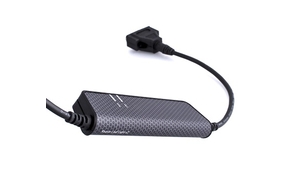
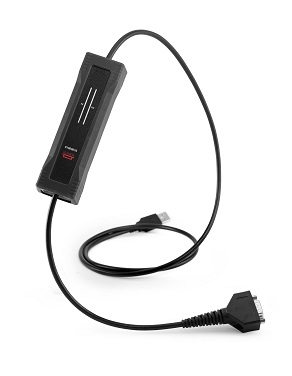
 PDF CAN (FD)-bus-USB-Converter Leaf v3 Data Sheet
PDF CAN (FD)-bus-USB-Converter Leaf v3 Data Sheet PDF CAN (FD)-bus-USB-Converter Leaf v3 OBDII Data Sheet
PDF CAN (FD)-bus-USB-Converter Leaf v3 OBDII Data Sheet  PDF CAN-bus-USB-Converter Leaf Light v2 Data Sheet
PDF CAN-bus-USB-Converter Leaf Light v2 Data Sheet PDF CAN-bus-USB- Leaf Light HS v2 interface OBDII Data Sheet
PDF CAN-bus-USB- Leaf Light HS v2 interface OBDII Data Sheet PDF USB-A / USB-C-CAN-FD-Interface U100 Data Sheet
PDF USB-A / USB-C-CAN-FD-Interface U100 Data Sheet PDF USB-CAN-FD-Interface U100P Precision Data Sheet
PDF USB-CAN-FD-Interface U100P Precision Data Sheet PDF USB-CAN-Converter USBcan Pro 2HS v2 Data Sheet
PDF USB-CAN-Converter USBcan Pro 2HS v2 Data Sheet PDF USB-CAN-Converter USBcan Pro 4HS Data Sheet
PDF USB-CAN-Converter USBcan Pro 4HS Data Sheet PDF USB-CAN-Converter USBcan Pro 4HS Silent Data Sheet
PDF USB-CAN-Converter USBcan Pro 4HS Silent Data Sheet
KVASER U100 / U100-C / U100P rugged CAN-FD-USBA / USBC interface for harsh environment
KVASER has launched a new family of CAN bus interfaces for USB: the KVASER U100 / U100-C and U100P are the robust single-channel CAN/CAN-FD converters with USB-A or USB-C connection. The U100 series is CAN-FD capable and features very fast throughput (comparable to CAN-PCI cards!). The KVASER U100 CAN adapters are designed for use in harsh environmental conditions: reinforced galvanic isolation, IP67, robust housing make them a robust companion for development or service engineers even in outdoor applications. The KVASER U100 are compatible with J1939, CANopen, NMEA 2000® and are therefore ideally suited as CAN-Service-Tools for battery management, electric vehicles, construction machinery, agricultural machinery, automated guided vehicles (AGVs), warehouse systems, etc. The CAN-USBA / USBC adapter Kvaser U100 / U100-C is supplied with a 9-pin D-SUB connector as standard. J1939-13 type II (01266-0), M12 (01267-7) and OBD-II (01268-4) connectors to the CAN bus are also available. The latest addition is the Kvaser U100P - the Precision version of the Kvaser U100 CAN USB interfaces. Features of the precision version include a high time stamp precision of 20 000 msg/s and MagiSync™, which allows synchronisation of time stamps between multiple Kvaser MagiSync™-enabled devices without additional cables.
NEW: KVASER CAN/CAN FD to USB real-time interface in silent mode (‘listen only’)
The Kvaser USBcan Pro 4xCAN Silent is a compact multichannel CAN/CAN FD to USB real-time interface that is always in silent mode (‘listen only’). Requirements for such devices typically come from applications such as sensitive autonomous system development, where the interface cannot affect the bus or surrounding systems. The Kvaser USBcan Pro 4xCAN Silent handles reception only of standard and extended CAN messages with a high time stamp precision. It has a USB 2.0 compliant connector at one end and four CAN channels in a single 26-pin D-sub CAN connector at the other, and includes a 4-channel breakout cable with 9-pin D-sub connectors for each channel. It is compatible with applications that use Kvaser‘s CANlib.
KVASER CAN-PCIe-CARDS (CAN-FD)
One of the most important product groups for KVASER are the CAN cards for PCI, PCIe, Mini-PCI-Express. The current CAN cards from KVASER are compatible with the new CAN standard CAN-FD. In contrast to the more mobile CAN-USB converters, CAN-PCI cards are used in stationary environments with a fixed PC. Applications can be found, for example, in production systems, in research and development and in medical technology.
The CAN-PCIe cards from Kvaser have been developed for the PCI Express x1 interface, but can also be used in any PCI Express x4 or PCI Express x16 slot; the PCI Express x16 slot is used by graphics cards, for example, while the PCI Express x4 slot is less common (e.g. in the server sector). The performance is independent of the selected card slot.
PCIE, PCIe and PCI Express are just different names for the same interface; PCIe cards communicate with the computer's CPU via serial PCI communication over the PCIe interface.
The CAN PCIe cards from Kvaser are available with 1, 2, 4 or 8 CAN channels; the latest generation of CAN PCI Express cards are the following:
single channel CAN-PCIe-card: Kvaser PCIEcan 1xCAN v3 (73-30130-01433-6)
two channel CAN-PCIe-card: Kvaser PCIEcan 2xCAN v3 (73-30130-01432-9)
four channel CAN-PCIe-card: PCIEcan 4xCAN v2 (73-30130-01414-5)
eight channel CAN-PCIe-card: Kvaser PCIe 8xCAN (73-30130-01512-8)
These four CAN PCIe cards are the same development generation and have the same performance; they all require a PCI Express slot in the computer.
New is a highly integrated 4-channel embedded CAN card for the M.2 interface that adds four high-speed CAN/CAN-FD channels to any host computer with PCI Express connectivity and an available M.2 slot with B or M encoding. The M.2 PCIe 4xCAN card from Kvaser is extremely compact with a footprint of only 22x80mm and a unique height of only 2mm. This was only possible due to the decentralized (off-board) arrangement of the CAN transceivers, allowing them to be placed closer to the CAN networks themselves. This layout maximizes signal quality and integrity. With a timestamp resolution of just 1 μs and a maximum message rate of 20000 msg/s per channel, as well as advanced features such as silent mode, error frame detection and generation, this innovative CAN card with distributed CAN transceivers can be integrated into a wide range of embedded systems:
four channel CAN-PCIe-card M.2-Slot: Kvaser M.2 PCIe 4xCAN (73-30130-01333-9)
Kvaser also offers CAN Mini PCI Express cards, these are available in single-channel or dual-channel versions; the latest cards are:
single channel CAN-Mini-PCIe-card: Kvaser Mini PCI Express 1xCAN v3 (73-30130-01420-6)
single channel CAN-FD-Mini-PCIe-over-USB-card: Kvaser Mini PCIe 1xCAN (USB) (73-30130-01368-1)
two channel CAN-Mini-PCIe-card: Kvaser Mini PCI Express 2xCAN v3 (73-30130-01417-6)
We have most products in stock (in small quantities), and at Kvaser almost everything is available quickly.
A small selection is shown in the data sheets on the right. If the product you are looking for is not listed - no problem, just ask us!
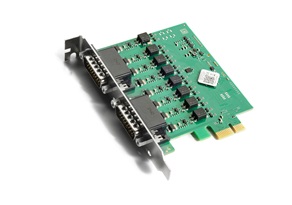
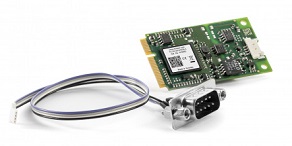
 PDF PCI-CAN-card, four channel, PCICANx 4xHS Data sheet
PDF PCI-CAN-card, four channel, PCICANx 4xHS Data sheet PDF PCIe-CAN-FD-card, single channel, PCIEcan 1xCAN v3 Data sheet
PDF PCIe-CAN-FD-card, single channel, PCIEcan 1xCAN v3 Data sheet PDF PCIe-CAN-FD-card, dual channel, PCIEcan 2xCAN v3 Data sheet
PDF PCIe-CAN-FD-card, dual channel, PCIEcan 2xCAN v3 Data sheet PDF PCIe-CAN-FD-card, four channel, PCIEcan 4xCAN v2 Data sheet
PDF PCIe-CAN-FD-card, four channel, PCIEcan 4xCAN v2 Data sheet PDF PCIe-CAN-FD-card, eight channel, PCIEcan 8xCAN Data sheet
PDF PCIe-CAN-FD-card, eight channel, PCIEcan 8xCAN Data sheet PDF PCIe-CAN-FD-card, four channel, M.2 PCIe 4xCAN Data sheet
PDF PCIe-CAN-FD-card, four channel, M.2 PCIe 4xCAN Data sheet PDF Mini-PCI-Express-CAN-card, single channel, Mini PCI Express 1xCAN v3 Data sheet
PDF Mini-PCI-Express-CAN-card, single channel, Mini PCI Express 1xCAN v3 Data sheet PDF Mini-PCIe-CAN-FD-over-USB-card, single channel, Mini PCIe 1xCAN (USB) Data sheet
PDF Mini-PCIe-CAN-FD-over-USB-card, single channel, Mini PCIe 1xCAN (USB) Data sheet PDF Mini-PCI-Express-CAN-card, two channel, Mini PCI Express 2xCAN v3 Data sheet
PDF Mini-PCI-Express-CAN-card, two channel, Mini PCI Express 2xCAN v3 Data sheet
COPLEY CAN-BUS-Interface-Cards and CAN-USB-Converter
As a PC interface to CAN-bus networks, Copley offers single-channel or dual-channel CAN cards in PCI, PCIe or PCI-104 format and CAN-bus-USB converters as CAN-Service-Tool (parameterization via CAN possible).
- single-channel or dual-channel, CAN 2.0A and CAN 2.0B compatible
- up to 1Mbit/sec
- ISO 11898 CAN-Transceiver
- fast dual-ported RAM memory
- CE, UL/CSA, FCC compliant
- RoHS compliant
- incl. software tools for commissioning, monitoring, diagnosis for Windows and Linux
CAN / ETHERCAT I/O PROCESSOR MODULE
In addition, we offer a CAN or EtherCAT I/O processor modules for PCB mounting. Here the technical information:
For CAN-Bus:
- 8 dedicated inputs for CAN address and CAN bit rate
- 72 digital I/O
- 12 analog inputs
- 12 PWM outputs
- 2 outputs for CAN status LED drive
- CAN and RS-232
- 32-bit Analog Filter; CPL
- Dimensions: in [mm]
2.00 x 2.25 x 0.225 in. [50.8 x 57.2 x 5.72 mm] - Weight 4.8 oz (136 g)
For EtherCAT:
- Programmable Filters on Analog Inputs
- Quad Incremental Encoder Input
- 250us Update Rate
- 80 digital I/O
- 12 analog inputs
- 2 analog outputs
- 2 EtherCAT interfaces, 1 RS-232 interface
- 1 Module Status LED (RED/GREEN)
- 2 EtherCAT Status LEDS (RED & GREEN)
- 2 LINK/ACT LEDS (GREEN)
- Dimensions: in [mm]
2.00 x 2.25 x 0.36 in. [50.8 x 57.2 x 9.2 mm] - Weight 4.8 oz (136 g)
KVASER ACCESSORIES FOR CAN-BUS-INTERFACES AND CAN-MEMORATORS
Additionally to the above CAN-bus-converters, CAN-cards and CAN-memorators KVASER also offers a few very useful accessories, which are an ideal combination to the CAN-(FD)-converters for USB, WLAN, PCI, PCIe, Mini-PCI-Express, PC-104 and Ethernet:
- CAN-bus-terminator: 120 Ohm, D-Sub, 9-pole, 1 side male, the other female
- CAN-bus-hub: 3x D-Sub-9 female, 1x D-Sub-9-male; adjustable can bus termination resistance (120 Ω, 60 Ω, without) by switch, with universal power supply for 12V, 1A (including connectors for EU, USA, UK and China), LED for power
- CAN-bus-power inlet for external power to CAN bus: 1x Sub-D-female (then with power), 1x Sub-D-male (without power), 2.0mm standard power connector, with universal power supply for 12V, 1A (including connectors for EU, USA, UK and China)


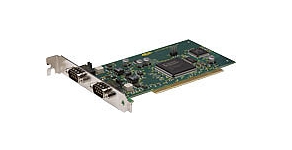

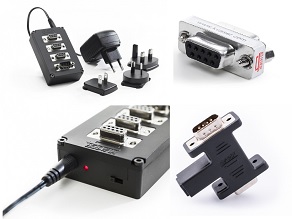
 PRINT PAGE |
PRINT PAGE |